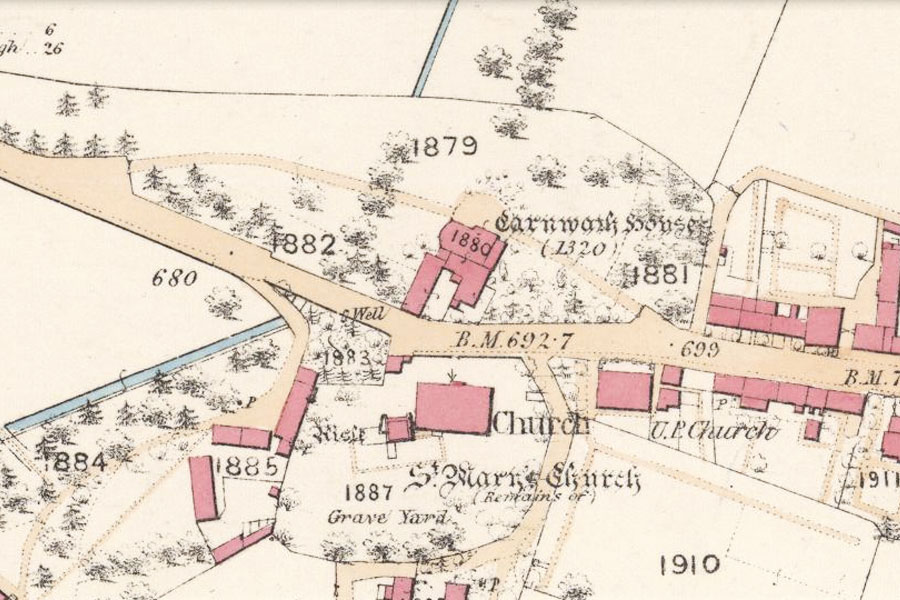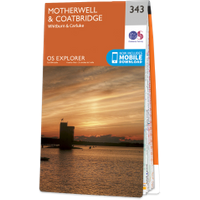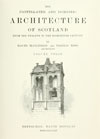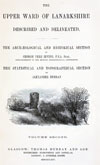

Carnwath House was an early 19th century mansion built around a much older core, which stood on the site of what is now Carnwath Golf Club’s clubhouse.
The original castle at Carnwath was built by the Somerville family, and dated back to at least the 15th century. The Somervilles came to this area of Lanarkshire in the 12th century, and were descended from Sir Gualter de Somerville, a Norman knight who arrived in England with William the Conqueror in 1066. Sir Gualter’s second son, William de Somerville, travelled to Scotland with David I in 1107, and some time after was granted the lands of Carnwath along with the title Lord Carnwath.
Initially they built Carnwath motte, before focusing their attention on one of their other properties nearby, Couthalley Castle, possibly in the 14th century.
Whether or not they lived continuously at Carnwath during this period, or moved permanently for some time to Couthalley Castle, is unknown. However on the Ordnance Survey map of 1858, published in 1864, the date 1320 is given for Carnwath House.

Ordnance Survey, 1864
In 1381 at a council at Jedburgh, presided over by Sir Robert Ker of Cessford, Sir John Somerville of Linton was recognised as heir to his father, Walter Somerville, in the baronies of Linton and Carnwath.
John, Baron of Carnwath, was invited to dinner in April 1390 by his “cousin”, Sir Robert Ker, at Cessford Castle while he was in the area arranging his affairs regarding his neighbouring barony of Lintoune. During the dinner they learned of the death of Robert II.
Little is known about the earliest incarnation of the castle at Carnwath, and not much more is known about what it developed into either. When inspected by the Ordnance Survey in 1968, some of the harling had fallen from the walls of the south-east wing, which revealed rubble masonry and 16th or 17th century blocked windows with carved mouldings.
Looking at the plan of Carnwath House on the Ordnance Survey map above, and considering that the south-east wing was old, it seems possible that by the 16th century Carnwath took the form of an L-plan tower house.
The main wing was aligned approximately north to south, with the secondary wing extending west from the north end of the main block. Latterly two storeys in height with Georgian or Victorian windows, it probably originally consisted of three shorter storeys. What looks like a possible stair tower can be seen within the re-entrant angle.
It seems that not much more is known about the structure. However there are references to Carnwath House over the centuries. Gilbert, the 8th Lord Somerville, is said to have entertained James VI with such extravagance at Couthalley Castle that he was forced to sell the Carnwath estates in 1603 to John Erskine, the 19th Earl of Mar.
The Earl of Mar subsequently sold the estate to Sir Robert Dalzell (later to become Lord Dalzell) in 1630. His son, also Robert, the 2nd Lord Dalzell, was created the 1st Earl of Carnwath in 1639.
Judging by old photographs of Carnwath House, a new long two storey wing was probably added in the 17th century, extending south from the west end of the secondary wing, forming a U-plan. With small and narrow windows, it certainly looks 17th century stylistically, or possibly even 16th century.
In 1651 Carnwath House seems to have been occupied by Cromwell’s English Parliamentarians under. It must have been a relatively short occupation, as later the same year, following the Battle of Inverkeithing, Charles II and his supporters headed south for England, and Charles is said to have spent the night at Carnwath House.
The Carnwath estate was sold in 1681 to Sir George Lockhart, Lord Advocate and the second son Sir James Lockhart of Lee. Carnwath House was never used as a main residence by the Lockharts, as they remained at their grander property of Lee Castle. Instead they occasionally used it as a hunting seat.
The Lockharts were Jacobites, and following the retreat from Derby Bonnie Prince Charlie had his headquarters at Carnwath for a short time. The exact rooms in Carnwath House which he occupied were apparently still known in the mid-19th century.
Around 1820 a new two storey wing was added to the north end of the house, with a new entrance on the north side, and a full height bow window on the west side. By the 1860s Carnwath House was occupied by the factor of the Lee and Carnwath estates.
The estate passed through the Lockhart family to Sir Simon Macdonald Lockhart of Lee, 5th Baronet. With their main residence continuing to be Lee Castle, Carnwath House served as the clubhouse for Carnwath Golf Club, founded in 1907 and opened by Sir Simon’s wife Lady Lockhart on the 19th of June. Sir Simon became Honorary President of the club until his death in 1919.
In 1970 Carnwath House was demolished, and replaced with a new clubhouse, a soulless ’70s box. Only the 19th century gateposts of the old house survive.

Alternative names for Carnwath House
House of Carnwath
















